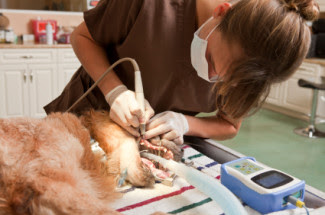One of the best things in the world is being able to make your dog dance around in happiness when you give him a treat he loves. Unfortunately, some owners give their dogs way too many treats. The treats may taste great but they can cause a lot of health problems if you give too many, or the wrong ones.
I'm not telling you to stop giving treats entirely. Certainly you should reward your dog for doing things you like, and it's great to indulge your dog a little occasionally. But some treats can be good for your dog in ways other than just emotionally.
Foods to Avoid
There are some treats and foods you should not give your dog. For instance, don't give your dog table scraps for treats. Table scraps can be bad for your dogs in some ways. Even something as harmless as garlic powder can cause your dog to have some digestive problems.
Additionally, human food often has a lot of fat in it that your dog doesn't need and it can lead to problems for your dog's organs such as fat in your dog's liver or an enlarged or weakened heart. Your dog can even develop diabetes. In general, if a food is not developed for a dog then you probably shouldn't feed it to him.
Besides table scraps, inexpensive dog biscuits and cookies that are high in fat are often fed once in a while, but if you feed them every day they can lead to health problems for your dog. You should avoid giving your dog treats that are high in fat or which are full of corn and wheat fillers.
Other things you should avoid giving your dog include pig ears (because of the risk of salmonella), ham bones, and cookies that are high in fat, especially if your dog is allergic to the grains which are often used in cookies.
Good Things for Your Dog
So, what kind of treats should you be giving your dog? There are some treats that I have found dogs love and which are healthy. Here is my list:
 |
| Kongs with Frozen peanut filling |
Stuffed Kongs: Kong toys are great because your dog can chew on them literally for years and they won't be destroyed. Even better, you can put treats, peanut butter, and even chunks of meat inside them to keep your dog interested in chewing on them.
Frozen and Ice Treats: Most dogs love ice, unless they have some dental problems. Have you ever see a dog run at a snow bank? Somewhere inside your dog he is programmed to love eating frozen water. And here's the best part of all: frozen and ice treats are free and they're healthy for your dog, though they can get messy sometimes.
 |
| Pet Factory Rawhide chews |
Rawhides Made in America: Dogs love rawhides and they make a great treat but you do need to be careful about giving them to your dog. Make sure you buy pressed rawhide so big chips won't tear off when your dog chews on it. And, secondly, make sure the rawhide you buy is American-made as there has been some discussion from news sources that rawhides from other places may contain arsenic.
Heavy, Big Bones: It's okay to give your dog some bones, as long as you watch and supervise your dog. These include large, heavy beef bones. But don't give your dog small bones that can chip or break, especially ham bones.
 |
| Top Chews Chicken Jerky |
Jerky: Dried meat, like jerky, is a great treat for dogs. Jerky doesn't usually have a lot of additives, dogs don't choke on it, and they are usually safe to feed to your dog. They can make good training treats, too, because they are easy to break up into smaller pieces.
When you're looking for treats for your dog you should look for treats that don't have a lot of fillers or artificial ingredients. Look for treats that have organic, grain-fed meats from the U.S. That way you'll know they have been handled properly and they don't contain ingredients that might make your dog ill.
Finally, every dog owner needs to have good treats for their dog, so take care, do your research, and always choose a treat that your dog will like.
Source:http://ezinearticles.com/?The-Best-Treats-For-Dogs&id=8155313
















































